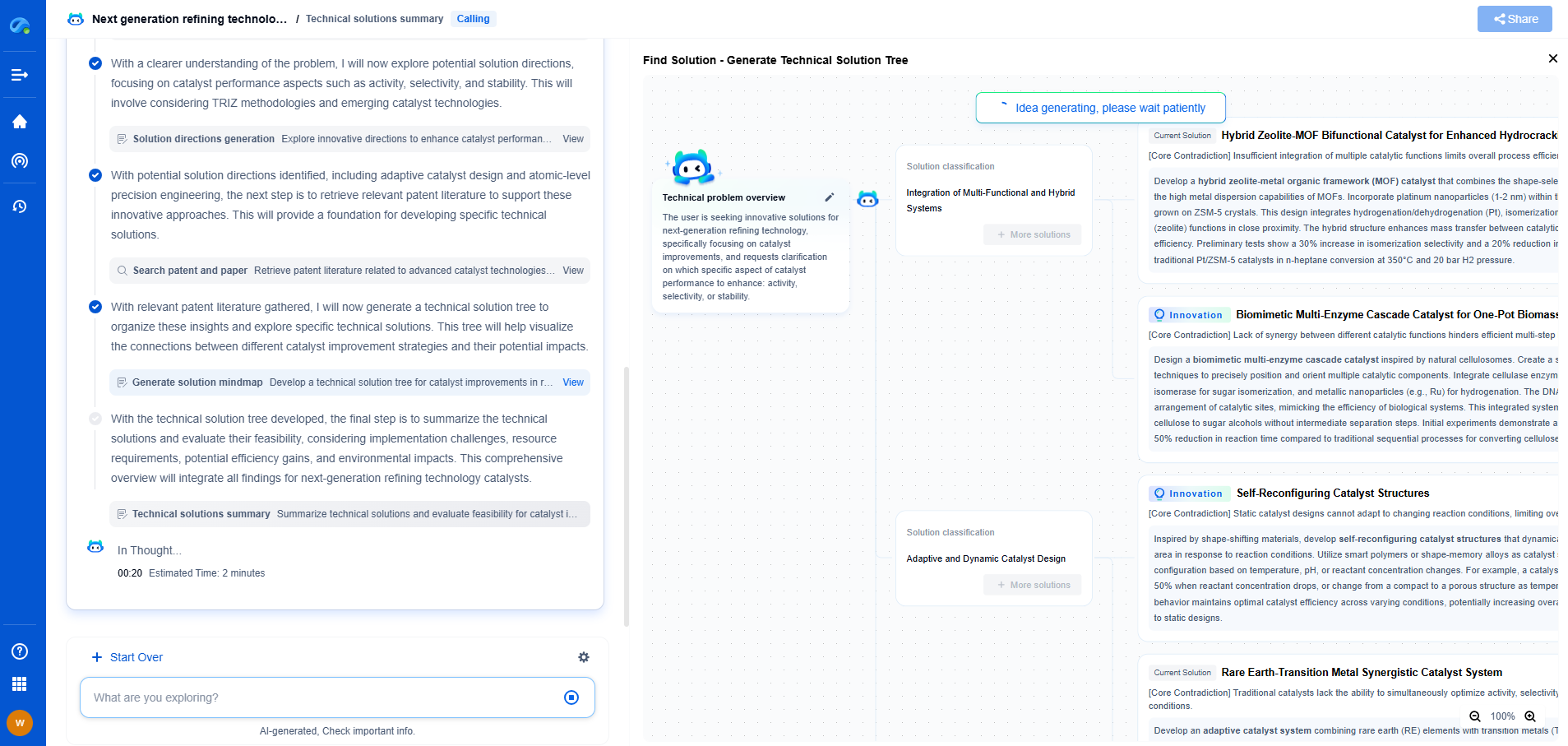Frame structure differences in TDD vs FDD in 5G
JUL 14, 2025 |
In the realm of telecommunications, understanding the intricacies of frame structures in Time Division Duplex (TDD) and Frequency Division Duplex (FDD) is paramount, especially with the advent of 5G technology. These two duplexing methods form the backbone of how data is transmitted over networks, and each has unique characteristics that influence their efficiency and suitability in various scenarios. In this blog, we delve into the frame structure differences of TDD and FDD within the context of 5G, shedding light on how these differences impact network performance and user experience.
Fundamentals of Duplexing
Duplexing in wireless communication refers to the ability to transmit and receive data simultaneously. In FDD, separate frequency bands are used for uplink and downlink, allowing simultaneous bidirectional communication. Conversely, TDD uses a single frequency band but alternates between uplink and downlink, splitting time into slots for each direction. This fundamental difference creates varied frame structures, each optimized for specific network demands.
Frame Structure in FDD
In FDD systems, the frame structure is straightforward due to the use of separate frequency bands. Each frame is divided into subframes, and each subframe consists of slots reserved for either uplink or downlink. The synchronization between the two bands is crucial, as it ensures that uplink and downlink transmissions occur without interference. This separation allows for continuous data transmission, minimizing latency and making FDD particularly suitable for applications requiring low latency, such as voice calls and video conferencing.
With 5G, FDD benefits from enhanced carrier aggregation, which allows multiple frequency bands to be used simultaneously, further increasing data throughput and spectral efficiency. This enhancement is vital for supporting the high data rates and low-latency requirements of advanced 5G applications.
Frame Structure in TDD
In contrast, the TDD frame structure is more dynamic due to its reliance on time slots within a single frequency band. A frame is divided into subframes, and each subframe is further divided into slots that are dynamically allocated to either uplink or downlink, based on network demands. The flexibility in allocating time slots makes TDD highly adaptable to varying traffic patterns, particularly in asymmetric traffic scenarios where uplink and downlink demands differ significantly.
In 5G TDD systems, advanced scheduling algorithms are employed to optimize the allocation of time slots, ensuring efficient use of the available spectrum. This adaptability makes TDD ideal for environments with fluctuating traffic patterns, such as urban areas with varying data demands throughout the day.
Impact of 5G Enhancements
The introduction of 5G technology has magnified the differences between TDD and FDD frame structures. Both duplexing methods benefit from advanced technologies like Massive MIMO (Multiple Input Multiple Output) and beamforming, which improve spectral efficiency and data throughput. However, the impact of these technologies is realized differently in TDD and FDD systems due to their inherent frame structure differences.
FDD systems, with their continuous frequency separation, can leverage these enhancements to provide consistent high-quality service, particularly in scenarios requiring low latency. Meanwhile, TDD systems can dynamically adjust to varying network conditions, maximizing the benefits of 5G enhancements in environments with rapidly changing traffic patterns.
Conclusion
Understanding the frame structure differences in TDD and FDD within the context of 5G is crucial for optimizing network performance and meeting diverse user demands. While FDD offers stability and low-latency benefits through its separate frequency bands, TDD provides adaptability and efficiency in managing asymmetric traffic patterns. As 5G networks continue to evolve, the choice between TDD and FDD will depend on the specific requirements of the application and the environment in which they operate, underscoring the importance of tailoring network solutions to meet the diverse needs of modern connectivity.
From 5G NR to SDN and quantum-safe encryption, the digital communication landscape is evolving faster than ever. For R&D teams and IP professionals, tracking protocol shifts, understanding standards like 3GPP and IEEE 802, and monitoring the global patent race are now mission-critical.
Patsnap Eureka, our intelligent AI assistant built for R&D professionals in high-tech sectors, empowers you with real-time expert-level analysis, technology roadmap exploration, and strategic mapping of core patents—all within a seamless, user-friendly interface.
📡 Experience Patsnap Eureka today and unlock next-gen insights into digital communication infrastructure, before your competitors do.
- R&D
- Intellectual Property
- Life Sciences
- Materials
- Tech Scout
- Unparalleled Data Quality
- Higher Quality Content
- 60% Fewer Hallucinations
Browse by: Latest US Patents, China's latest patents, Technical Efficacy Thesaurus, Application Domain, Technology Topic, Popular Technical Reports.
© 2025 PatSnap. All rights reserved.Legal|Privacy policy|Modern Slavery Act Transparency Statement|Sitemap|About US| Contact US: help@patsnap.com

